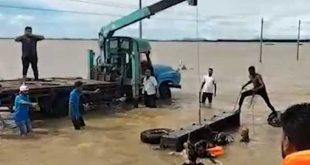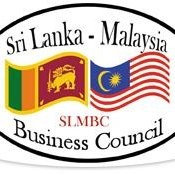US-backed ‘bribes’ in Afghanistan may be funding TalibanOn June 7, the day Afghanistan became America’s longest-ever war, the New York Times reported on an ongoing investigation poised to prove that private security companies “are using American money to bribe the Taliban” to fuel combat and thus enhance demand for their services. The news follows a “series of events last month that suggested all-out collusion with the insurgents,” the Times said.“The American people are paying to prop up a corrupt government that may be using our money to pay private companies to drum up business by paying the insurgents to attack our troops,” [Kucinich] said…. The Times interviewed a NATO official in Kabul who “believed millions of dollars were making their way to the Taliban.” [read more]
Pakistan’s main spy agency continues to arm and train the Taliban and is even represented on the group’s leadership council despite U.S. pressure to sever ties and billions in aid to combat the militants, said a research report released Sunday.The findings could heighten tension between the two countries and raise further questions about U.S. success in Afghanistan since Pakistani cooperation is seen as key to defeating the Taliban, which seized power in Kabul in the 1990s with Islamabad’s support.U.S. officials have suggested in the past that current or former members of Pakistan’s powerful Inter-Services Intelligence agency, or ISI, have maintained links to the Taliban despite the government’s decision to denounce the group in 2001 under U.S. pressure. [read more]
While U.S. officials insist they are making progress in reversing the momentum built up by the Taliban insurgency over the last several years, the latest news from Afghanistan suggests the opposite may be closer to the truth.Even senior military officials are conceding privately that their much-touted new counterinsurgency strategy of “clear, hold and build” in contested areas of the Pashtun southern and eastern parts of the country are not working out as planned despite the “surge” of some 20,000 additional U.S. troops over the past six months.Casualties among the nearly 130,000 U.S. and other NATO troops now deployed in Afghanistan are also mounting quickly. [read more]
U.S. Identifies Vast Riches of Minerals in AfghanistanThe United States has discovered nearly $1 trillion in untapped mineral deposits in Afghanistan, far beyond any previously known reserves…. The previously unknown deposits — including huge veins of iron, copper, cobalt, gold and critical industrial metals like lithium — are so big and include so many minerals that are essential to modern industry that Afghanistan could eventually be transformed into one of the most important mining centers in the world, the United States officials believe.An internal Pentagon memo, for example, states that Afghanistan could become the “Saudi Arabia of lithium,” a key raw material in the manufacture of batteries for laptops and BlackBerrys. [read more]
“The New York Times, when it was beating the drums of war in 2002, failed to mention that the USGS published a report, at that time, Mines and Mineral Occurrences of Afghanistan Compiled by G.J. Orris and J.D. Bliss. Open-File Report 02-110. On page 16, they list as ‘Significant Minerals or Materials’ magnetite, hematite, chalcopyrite, covellite, chalcocite, cuprite, malachite, azurite, molybdenite, and native gold – lithium is mentioned on page 10 under ‘References.’”
ORIGINS OF THE AFGHANISTAN OCCUPATION: “STRATEGY OF THE SILK ROUTE”Up until 9/11, oil companies, with the help of the Bush administration, were desperately trying to work out a deal with the Taliban to build an oil pipeline through Afghanistan. One of the world’s richest oil fields is on the eastern shore of the Caspian sea just north of Afghanistan. The Caspian oil reserves are of top strategic importance in the quest to control the earth’s remaining oil supply. The US government developed a policy called “The Strategy of the Silk Route.”The policy was designed to lock out Russia, China and Iran from the oil in this region. This called for U.S. corporations to construct an oil pipeline running through Afghanistan. Since the mid 1990s, a consortium of U.S. companies led by Unocal have been pursing this goal. A feasibility study of the Central Asian pipeline project was performed by Enron. Their study concluded that as long as the country was split among fighting warlords the pipeline could not be built. Stability was necessary for the $4.5 billion project and the U.S. believed that the Taliban would impose the necessary order. The U.S. State Department and Pakistan’s ISI, impressed by the Taliban movement to cut a pipeline deal, agreed to funnel arms and funding to the Taliban in their war for control of Afghanistan. [read more]
ORIGINS OF THE IRAQ OCCUPATION: CHENEY ENERGY TASK FORCEAs an AlterNet report put it: “In January 2000, 10 days into President George W. Bush’s first term, representatives of the largest oil and energy companies joined the new administration to form the Cheney Energy Task Force.”Secret Task Force documents that were dated March 2001, which were obtained by Judical Watch in 2003 after a Freedom of Information Act lawsuit, contained “a map of Iraqi oilfields, pipelines, refineries and terminals, as well as two charts detailing Iraqi oil and gas projects…” They also had: “… a series of lists titled ‘Foreign Suitors for Iraqi Oilfield Contracts‘ naming more than 60 companies from some 30 countries with contracts in various stages of negotiation.None of contracts were with American nor major British companies, and none could take effect while the U.N. Security Council sanctions against Iraq remained in place. Three countries held the largest contracts: China, Russia and France — all members of the Security Council and all in a position to advocate for the end of sanctions.Were Saddam to remain in power and the sanctions to be removed, these contracts would take effect, and the U.S. and its closest ally would be shut out of Iraq’s great oil bonanza.”Project Censored highlighted a Judicial Watch report that stated: “Documented plans of occupation and exploitation predating September 11 confirm heightened suspicion that U.S. policy is driven by the dictates of the energy industry. According to Judicial Watch President, Tom Fitton, ‘These documents show the importance of the Energy Task Force and why its operations should be open to the public.’”
The Business of War in the Democratic Republic of Congo, Dena Montague and Frida Berrigan“This is all money,” says a Western mining executive, his hand sweeping over a geological map toward the eastern Democratic Republic of Congo (DRC). He is explaining why, in 1997, he and planeloads of other businessmen were flocking to the impoverished country and vying for the attention of then-rebel leader Laurent Kabila. The executive could just as accurately have said, ‘This is all war.’The interplay among a seemingly endless supply of mineral resources, the greed of multinational corporations desperate to cash in on that wealth, and the provision of arms and military training to political tyrants has helped to produce the spiral of conflicts that have engulfed the continent – what many regard as “Africa’s First World War.” These minerals are vital to maintaining U.S. military dominance…” [read more]
American Companies Exploit the Congo:The Democratic Republic of Congo (DRC) has been labeled “the richest patch of earth on the planet.” The valuable abundance of minerals and resources in the DRC has made it the target of attacks from U.S.-supported neighboring African countries Uganda and Rwanda.The DRC is mineral rich with millions of tons of diamonds, copper, cobalt, zinc, manganese, uranium, niobium, and tantalum also known as coltan. Coltan has become an increasingly valuable resource to American corporations. Coltan is used to make mobile phones, night vision goggles, fiber optics, and capacitators used to maintain the electrical charge in computer chips….The DRC holds 80% of the world’s coltan reserves, more than 60% of the world’s cobalt and is the world’s largest supplier of high-grade copper. With these minerals playing a major part in maintaining US military dominance and economic growth, minerals in the Congo are deemed vital US interests.Historically, the U.S. government identified sources of materials in Third World countries, and then encouraged U.S. corporations to invest in and facilitate their production. Dating back to the mid-1960s, the U.S. government literally installed the dictatorship of Mobutu Sese Seko, which gave U.S. corporations access to the Congo’s minerals for more than 30 years. However, over the years Mobutu began to limit access by Western corporations, and to control the distribution of resources. In 1998, U.S. military-trained leaders of Rwanda and Uganda invaded the mineral-rich areas of the Congo. The invaders installed illegal colonial-style governments which continue to receive millions of dollars in arms and military training from the United States. Our government and a $5 million Citibank loan maintains the rebel presence in the Congo. Their control of mineral rich areas allows western corporations, such as American Mineral Fields, to illegally mine. Rwandan and Ugandan control over this area is beneficial for both governments and for the corporations that continue to exploit the Congo’s natural wealth….San Francisco based engineering firm Bechtel Inc. established strong ties in the rebel zones as well. Bechtel drew up an inventory of the Congo’s mineral resources free of charge, and also paid for NASA satellite studies of the country for infared maps of its minerals. Bechtel estimates that the DRC’s mineral ores alone are worth $157 billion dollars. Through coltan production, the Rwandans and their allies are bringing in $20 million revenue a month. Rwanda’s diamond exports went from 166 carats in 1998 to 30,500 in 2000. Uganda’s diamond exports jumped from approximately 1,500 carats to about 11,300. The final destination for many of these minerals is the U.S.” [read more]
“Today, the United States claims that it has no interest in the DRC other than a peaceful resolution to the current war. Yet U.S. businessmen and politicians are still going to extreme lengths to gain and preserve sole access to the DRC’s mineral resources. And to protect these economic interests, the U.S. government continues to provide millions of dollars in arms and military training to known human-rights abusers and undemocratic regimes. Thus, the DRC’s mineral wealth is both an impetus for war and an impediment to stopping it….During his historic visit to Africa in 1998, President Clinton praised Presidents Kagame and Musevini as leaders of the ‘African Renaissance,’ just a few months before they launched their deadly invasion of the DRC with U.S. weapons and training….The International Monetary Fund (IMF) and World Bank have knowingly contributed to the war effort. The international lending institutions praised both Rwanda and Uganda for increasing their gross domestic product (GDP), which resulted from the illegal mining of DRC resources. Although the IMF and World Bank were aware that the rise in GDP coincided with the DRC war, and that it was derived from exports of natural resources that neither country normally produced, they nonetheless touted both nations as economic success stories….In January 2000, Chevron – the corporation that named an oil tanker after National Security Advisor Condoleezza Rice – announced a three-year, $75 million spending program in the DRC, thus challenging the notion that war discourages foreign investment…. As one investor put it, “It is a good moment to come: it is in difficult times that you can get the most advantage.”….In April 2001, a scathing UN report argued that Presidents Kagame and Museveni are “on the verge of becoming the godfathers of the illegal exploitation of natural resources and the continuation of the conflict in the Democratic Republic of Congo.” The two leaders, the report alleged, have turned their armies into armies for business….According to East African media reports, U.S. diplomats continue to view Rwanda and Uganda as “strategic allies in the Great Lakes region” and “would not want to upset relations with them at this time.” …. The IMF and World Bank have also indicated that their policies toward Rwanda and Uganda will remain unchanged….”
You that hide behind desks
I just want you to know,
I can see through your mask…”
Post Disclaimer | Support Us
Support Us
The sailanmuslim.com web site entirely supported by individual donors and well wishers. If you regularly visit this site and wish to show your appreciation, or if you wish to see further development of sailanmuslim.com, please donate us
IMPORTANT : All content hosted on sailanmuslim.com is solely for non-commercial purposes and with the permission of original copyright holders. Any other use of the hosted content, such as for financial gain, requires express approval from the copyright owners.
 Sri lanka Muslims Web Portal Sri Lanka Muslims News Center
Sri lanka Muslims Web Portal Sri Lanka Muslims News Center



